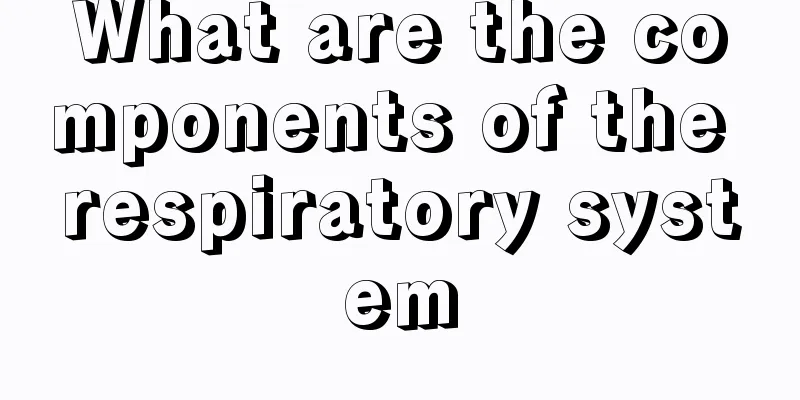What are the components of the respiratory system

|
The respiratory system is an organ for ventilation and gas exchange, and is an indispensable basis for maintaining our lives. The human respiratory system includes the nose, pharynx, larynx, trachea, and bronchi, so we can better understand the function of the respiratory system by understanding these components. 1. The conduct of various activities. The human respiratory system includes gas passages (nose, pharynx, larynx, trachea, bronchi) and places for gas exchange (lungs) as well as blood circulation, lymphatic and nerve structures. The pleura and pleural cavity, mediastinum, thorax and respiratory muscles are all necessary devices to ensure respiratory movement. 2. If the human respiratory system is compared to a factory, then the nose, pharynx, larynx, trachea, and bronchi are pipelines for raw material transportation, the lungs are the place where raw materials are processed, and the thorax, respiratory muscles, etc. are the power system to maintain the operation of the factory. Understanding the structural characteristics of the respiratory system will help you understand and master the relevant knowledge of chronic bronchitis. The airway is usually divided into two parts, namely the upper respiratory tract and the lower respiratory tract. The upper respiratory tract includes the nose, pharynx, larynx and its adjacent organs (such as tonsils and paranasal sinuses). The nasal cavity is divided into left and right cavities by the nasal septum, and is connected to the outside world by the nostrils. It is the gateway for gas to enter and exit. In addition to the olfactory function, it also has the functions of filtering dust, purifying dust and bacteria in the air, and increasing the temperature and humidity of the inhaled air. 3. In addition, when the nasal mucosa is stimulated by harmful gases or foreign objects, sneezing and runny nose may occur to remove harmful substances and protect the human body. The pharynx is divided into three parts: nasopharynx, oropharynx and laryngopharynx, which are connected to the nasal cavity, oral cavity and laryngeal cavity respectively, and are common passages for the digestive tract and respiratory tract. Because the submucosal lymphoid tissue of the pharynx is rich, it forms the pharyngeal lymphatic ring, which surrounds the connection between the mouth, nose and pharyngeal cavity, prevents pathogenic microorganisms from invading the lower respiratory tract, and has an important defense function. The laryngeal cavity is a passage connecting the pharyngeal cavity and the trachea, which is composed of cartilage, ligaments, laryngeal muscles and mucosa. The gap between the left and right vocal cords is called the glottis, which is the narrowest part of the upper respiratory tract. |
<<: Introduction to the use of ventilator
>>: What is the function of deer antler
Recommend
Can pregnant women eat jackfruit?
For breastfeeding mothers, they can also eat jack...
Adverse reactions to chemotherapy for uterine cancer
The toxicity and adverse reactions caused by uter...
The room is not ventilated and I feel chest tightness when sleeping
The human body needs to breathe every day, so it ...
Are there any symptoms of cervical cancer and uterine cancer at first?
Cervical cancer and uterine cancer usually have n...
How to prevent blushing before drinking
Blushing after drinking is a sign of drunkenness....
What should I do if there are a lot of hard grains on the soles of my feet?
The health of the soles of the feet is often over...
Acne treatment methods for middle school students
Everyone knows that today's middle school stu...
Symptoms of inferior wall myocardial infarction
The health of the heart is an aspect that people ...
How to clean oil stains on down jackets
When we encounter down jackets with oil stains du...
How to use pressed powder
Pressed powder is an essential part of makeup, an...
How long can you live with acute colorectal cancer
After suffering from a malignant tumor, if you wa...
What are the dangers of lumbar spinal stenosis?
The lumbar vertebra is a part of the spine, and a...
See the health status of the five internal organs at a glance
The health status of the five internal organs, li...
Can I drink red wine after its expiration date?
Generally, you cannot drink dry red wine after it...
How to improve your lung capacity and sing well
Lung capacity is very important for singers. Only...









